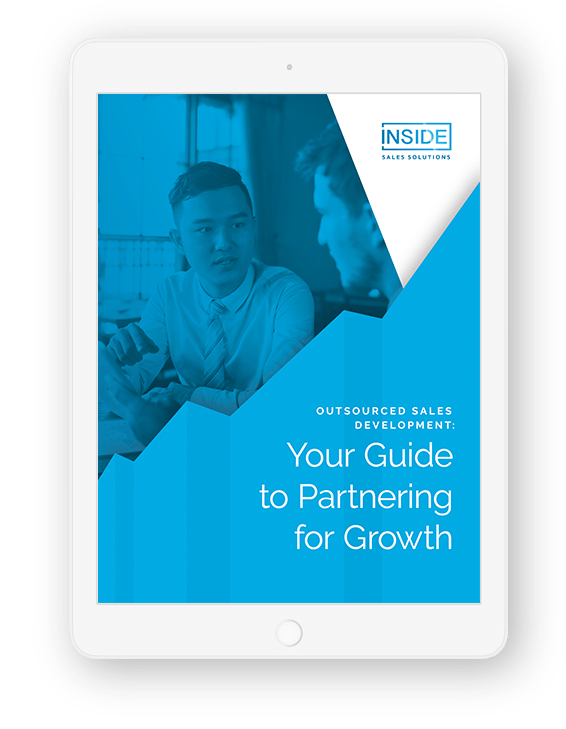Meeting your sales goals and metrics can sometimes feel like an impossible task – constantly racing to make more phone calls and increase conversion rate to hit your quota. And just when you’ve accomplished your goal…the new quarter begins, and it starts all over.

Whether you’re a quota-carrying salesperson or a sales team leader, metrics are your measurement of success. And with quota on the line, every phone call and email counts.
But for everyone in your sales organization, knowing what to measure is only half the battle. It’s knowing how to put those measurements to use (and what strategies to employ along the way) that can help you continue to meet your metrics this quarter and the next.
Get the Ultimate Guide to Maximizing Channel Sales
Sales Metrics:
These top five sales metrics will tell you where you succeeded, where you can improve, and what opportunities lay ahead.
1. Total Revenue
2. Market Penetration
3. Avg Deal Size
4. Close Rate/Win Rate
5. Net-New Business
Leading Indicator Metrics:
Your leading metrics will help determine if you’re on track to meet your goals or starting to lag behind. Pay close attention to these indicators as you go about your daily business to ensure you don’t stray too far off course.
1. Calls Made
2. Emails Sent
3. Website Conversions
4. Referrals
5. Meetings/Demos Scheduled
Strategies to Meet Your Metrics
“Sales is an outcome, not a goal. It’s a function of doing numerous things right, starting from the moment you target a potential prospect until you finalize the deal.”
– Jill Konrath
While many articles have spent their word count arguing the merit of inbound vs. outbound sales strategies, we argue that there is room for both. In fact, you’re doing yourself a disservice as a salesperson or a sales team manager if you aren’t employing both inbound and outbound tactics.
Inbound Sales: Simply put, the leads find you. What does this mean for the quality? Inbound leads are a mixed bag from small to large, which often means a shorter sales cycles and smaller deal sizes. Leads coming inbound will often already have several BANT criteria met before you even have your first call with them.
Outbound Sales: In this case, you are reaching out to your leads directly, whether through email, social media, the phone, or a combination of them all. Cycle times are typically longer but due to the hyper-targeted nature of outbound strategies, the deal sizes tend to be much larger. Doing outbound right takes time as you will have to navigate through the organization to find the right person or decision-maker to connect with.
Ready to combine outbound and inbound to amplify your efforts and meet your metrics? Let’s get started.
1. Set Your Target (Total Revenue vs. Number of Deals)
Whether your quota is based on number of deals closed or overall revenue brought in, defining your finish line is the first step towards meeting your goals and hitting your quotas.
2. Determine Your Average Deal Size
This step will be especially important if your quota is dollar and cents oriented. Do you bring in a few extremely large deals or is your strategy to target smaller deals and simply get more of them. Either way, a realistic understanding of your average deal size will help you determine how many deals you need to close to meet your metrics.
3. Analyze Your Close Rate Over the Last Year
Sometimes the key to planning the future is reflecting on the past – and this is one of those times. If you know how many deals you need to close to hit your target and you know your average close rate, you can begin to calculate how many meetings or demos you need to hit that target.
4. Reverse Engineer Your Leading Indicators
And this is where your leading indicators really come into focus. Once you’ve calculated the number of meetings you need to have based on your close rate, you can calculate the number of phone calls, emails, and social connections that will get you to your target meeting count. This number will of course vary based on industry, your historical averages, etc. Make sure you‘re being honest about the number of outreaches needed to hit the target – if your leading indicators are off, everything else will fall off the track.
5. Amplify Your Efforts with Inbound and Outbound Sales Strategies
Simply put, it takes both strategies to really move the needle on your metrics. And now that you’ve defined your quotas and benchmarks, you can roll up your sleeves and really get to work.
Looking at the work you’ve done in the last four steps, you can identify how many inbound leads vs. outbound leads you will need to meet your metrics. Remember: outbound leads may have a longer sale cycle, but they also typically have a higher deal size. Mixing and matching your inbound and outbound sales efforts will ensure you achieve your quota and never waste a moment waiting for a new lead to find their way to you.
A few inbound and outbound sales metrics to keep in mind when deciding your daily (or weekly) balance of inbound vs. outbound efforts:
• On average, it takes about 8-12 total touchpoints to engage with an inbound lead source when using multi-channel: LinkedIn, email, and phone.
• On average, it takes 12-16 touchpoints to engage with an outbound lead when using a multi-channel approach: phone, email, and LinkedIn.
• For outbound efforts, 60% of your discovery calls move to the next stage in the sales process and around 25-35% of those move on to closed-won customers if you’re performing well.
For both inbound and outbound strategies to be successful, you will need to be armed with the right marketing material AND messaging. Because while collateral may be universal, the messaging you pair with it can vary based on whether the lead is inbound or outbound. Identifying this difference and customizing your messaging appropriately can be the difference between a score and a miss.
Bonus: In both cases, you’re chances of success will be drastically improved by identifying and working with an internal champion from the target account. These champions will help you to gain access to key decision-makers within the organization and build the trust of those you meet along the way.
Meeting a quota doesn’t have to feel like a race against the clock. With accurate measurement, an understanding of your leading indicators, and the right pairing of inbound and outbound strategies, you’ll be making President’s Club in no time.
Considering Outsourced Sales Development?
Don't make your decision until you read our guide to creating a successful partnership for growth.


